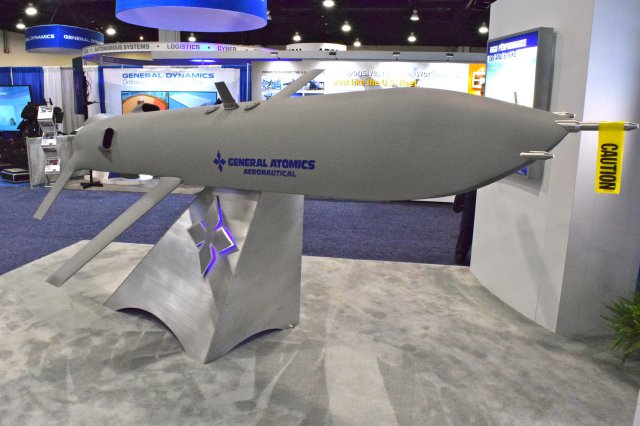 The capability to operate in non-permissive environments against enemy air defenses, manned-unmanned teaming to extend the reach of sensors and autonomy will be key future attributes of unmanned aircraft systems (UAS), industry and government experts said September 20 at the Air Force Association (AFA) Air, Space and Cyber conference.
The capability to operate in non-permissive environments against enemy air defenses, manned-unmanned teaming to extend the reach of sensors and autonomy will be key future attributes of unmanned aircraft systems (UAS), industry and government experts said September 20 at the Air Force Association (AFA) Air, Space and Cyber conference.
The progression in the capability of unmanned aircraft since the U.S. first deployed the MQ-1 Predator in combat in the Balkans in the 1990s has been dramatic. “However, if you look at every place we’ve deployed them, it’s been permissive,” instructed Kenneth Callicutt, U.S. Strategic Command director of capability and resource integration. “I think as we go forward the question is how do I employ this unmanned component in a non-permissive environment and more important, what else can I do with it? We’ve only tapped the beginning of this capability in unmanned air vehicles.”
Callicutt said future unmanned aircraft must operate within a network and be capable of extending the “sensor net” of manned aircraft such as the F-22 and F-35 fighters and the B-21 Raider long-range strike bomber. They must be enabled for the next tactical data network beyond Link 16. “It’s time to start thinking about the next battle network,” Callicutt said. Link 16’s “51 published frequencies cannot be the future battle network.”
James Gear, L3 Communications vice president for advanced systems, listed the ability to operate in non-permissive environments, distributed control of an aircraft’s sensor to more than its operator and expendable versus reusable unmanned vehicles as future priorities. Tom Clancy, Aurora Flight Sciences Corp., vice president of UAS, said unmanned aircraft “should be able to leverage human judgment” and be autonomous in perceiving, deciding and taking action during a mission.
“It’s not about the vehicle, it’s about how they’re employed and what they do to extend the productivity and the reach of the warfighter, whether it’s extending sensor networks, whether it’s automation that allows them to work in less permissive or contested environments because they have a logic that allows them to adapt,” said Christopher Pehrson, General Atomics Aeronautical Systems (GA-ASI) senior director of strategic development. One capability will be to dynamically reassign missions of networked aircraft in real time, he added.
At the AFA conference, GA-ASI exhibited a full-scale model of a concept sUAS (small UAS) it is developing for the Defense Advanced Research Project Agency’s “Gremlins” program to enable manned aircraft to launch “volleys” of low-cost, reusable UAS equipped with sensors. In March, Darpa awardedGA-ASI and three other companies (Composite Engineering, Dynetics and Lockheed Martin) Phase 1 contracts to develop their respective approaches toward a preliminary design review.
Darpa has specified unmanned vehicles with a 300-mile range that can loiter for an hour and be retrieved in the air by a C-130 transport. Pehrson said GA-ASI wants to develop a vehicle that could also be deployed from the MQ-9 Reaper, which has a maximum takeoff weight of 12,500 pounds and the ability to carry 3,000 pounds externally. The Gremlin concept vehicle the company is developing weighs 700 pounds, meaning the MQ-9 could carry more than one.
Darpa will release Phase 2 proposal to industry shortly to develop a engineering development model prototype, Pehrson said.
Photo: General Atomics exhibited a full-scale model of its 700-pound SUAS concept vehicle at AFA conference – Bill Carey
Source: AIN Online
